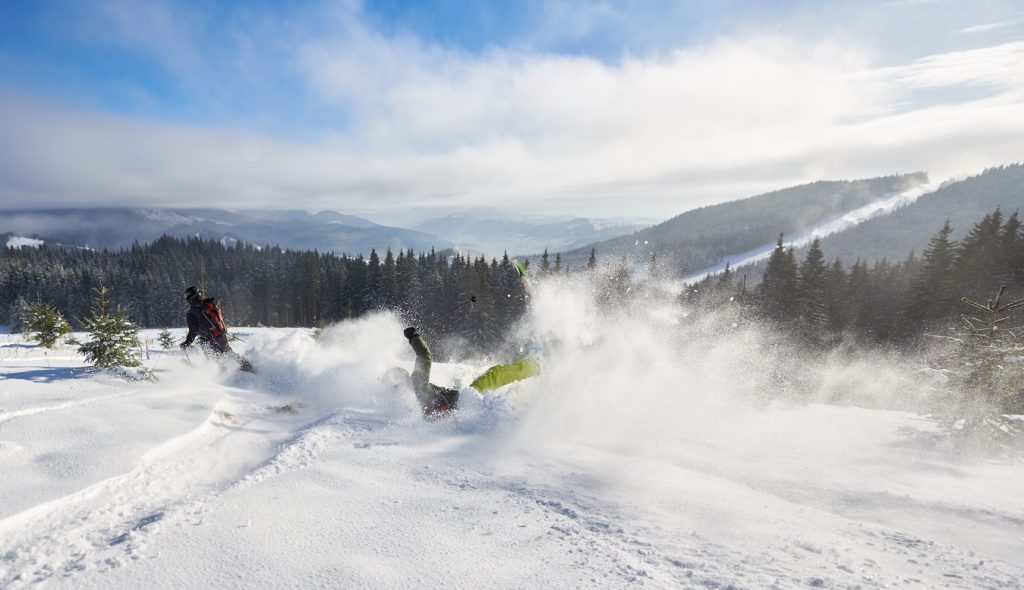Skiing is often described as a sport of freedom, but when two paths cross on a crowded slope, accidents may result in serious injuries and complicated liability disputes. For those harmed in such incidents, a central question arises: how will the injured party be compensated? The process of securing a ski collision claim payment is not always straightforward, and the answer often lies within insurance coverage. Understanding the role of different policies can provide clarity for those navigating the aftermath of a ski accident.
The financial burden of medical expenses, lost wages, and long-term rehabilitation following a skiing collision can be substantial. Since litigation can be lengthy and costly, many settlements and judgments are ultimately funded through insurance. Exploring common insurance options sheds light on the pathways available to both claimants and defendants when resolving responsibility after a ski accident.
The Importance of Insurance in Ski Collision Claim Payment
When two skiers collide, the law generally treats the incident similarly to other negligence-based accidents. The injured party must establish that the other skier failed to act reasonably under the circumstances, creating liability. However, establishing fault is only one step. Even when liability is clear, the question of how compensation will be delivered is often answered through insurance.
The concept of a ski collision claim payment is tied directly to the policies in place for both the injured party and the defendant. Homeowners’ policies, renters’ coverage, and specialized recreational insurance can all serve as sources of payment. Without insurance, injured individuals may face challenges in recovering damages, particularly if the liable skier lacks the financial resources to pay.
Homeowners’ Insurance and Its Role in Ski Collision Claim Payment
One of the most common sources of coverage for accidents on the slopes is homeowners’ insurance. Many homeowners’ policies include personal liability coverage that extends beyond the home itself. This means if a skier negligently collides with another on the mountain, their homeowners’ policy may cover the damages.
For example, if an injured skier pursues compensation for medical bills and lost wages, the defendant’s homeowners’ liability policy may provide coverage up to the policy limits. Importantly, policy exclusions and liability caps vary, so a full review of coverage details is essential. Still, homeowners’ insurance often represents the first line of defense in achieving a ski collision claim payment when negligence is established.

Renters’ Insurance as a Resource for Ski Collision Claim Payment
Renters, much like homeowners, can carry liability coverage through their renters’ insurance policies. These policies generally include personal liability provisions that apply in many contexts outside the insured residence. As a result, if a renter is involved in a ski collision and found responsible, their liability insurance could be triggered to pay damages.
For an injured party, this provides a reliable path toward a ski collision claim payment, especially in cases where the negligent skier may not appear to have significant financial resources. Renters’ insurance often mirrors homeowners’ liability coverage, though limits are sometimes lower. Nonetheless, for many injured skiers, this type of insurance makes the difference between struggling to cover medical costs and receiving timely compensation.
Umbrella Insurance and High-Value Ski Collision Claim Payment
In cases where damages exceed the limits of standard policies, umbrella insurance becomes significant. Umbrella policies provide additional liability coverage beyond what is available through homeowners’ or renters’ insurance. If a ski accident results in catastrophic injury requiring substantial compensation, umbrella coverage may step in once the base policy has been exhausted.
This layer of protection ensures that even when injuries are severe and costs high, an injured party still has a viable route to recover damages. Umbrella policies are particularly important in cases where permanent disability, long-term medical care, or loss of earning capacity are at issue. For claimants, knowing whether the defendant has umbrella insurance can be crucial to understanding the likelihood of a full ski collision claim payment.
Health Insurance and Its Connection to Ski Collision Claim Payment
While liability insurance determines how a defendant may fund compensation, an injured skier’s own health insurance often plays an immediate role. Medical bills from emergency treatment, surgeries, or rehabilitation are usually first processed through health insurance. The insurer may later assert a right to reimbursement, known as subrogation, from any eventual settlement or judgment.
For claimants, this means that even if a ski collision claim payment is delayed, their health insurance can cover immediate medical needs. However, reimbursement obligations must be carefully considered when calculating net recovery. Understanding how health insurance interacts with liability coverage ensures that the injured party has a realistic view of what compensation will ultimately look like.

Specialized Sports and Travel Insurance for Ski Collision Claim Payment
Some skiers purchase specialized sports insurance or travel policies that include coverage for accidents on the slopes. These policies may provide both medical coverage and liability protection, offering broader security than standard homeowners’ or renters’ policies. For international ski trips or resorts requiring proof of insurance, these policies can play an essential role in protecting both the skier and others who may be injured.
From the perspective of an injured party, knowing that a defendant carries specialized sports coverage can significantly increase the likelihood of securing a prompt ski collision claim payment. Such policies often cover scenarios that may otherwise fall outside the scope of traditional liability coverage.
Legal Considerations in Securing a Ski Collision Claim Payment
Beyond the insurance details, the legal framework governing skiing accidents plays an important role. States vary in how they handle recreational liability, and many jurisdictions recognize the doctrine of assumption of risk. Still, when a skier’s conduct is reckless or negligent, liability remains possible.
Courts typically consider factors such as skier speed, control, location on the slope, and adherence to posted rules. For claimants, proving negligence is the first hurdle. Once liability is established, the insurance options discussed above determine whether and how a ski collision claim payment will be secured.
In more complex cases, settlements may be structured in a way that coordinates payments across multiple insurance policies. This process requires careful navigation of coverage limits, exclusions, and overlapping benefits.
Realities of Funding a Ski Collision Claim Payment
Even when liability insurance exists, challenges remain. Defendants may dispute fault, insurers may resist settlement, and litigation can extend the timeline for payment. However, policies provide a practical mechanism for ensuring that injured individuals are not left uncompensated.
One perspective on how defendants can cover the cost of such claims can be found through resources like ski collision claim payment options, which outline the practical means by which damages may be addressed.
Additionally, government resources provide guidance on recreational liability and consumer protection in insurance disputes. For instance, the U.S. Department of Transportation offers regulatory materials related to safety and liability standards, demonstrating how broader legal frameworks interact with insurance claims.
The Broader Context of Ski Collision Claim Payment
Every skiing accident represents not only a personal injury event but also a legal and financial negotiation. The process of obtaining a ski collision claim payment depends on establishing negligence, identifying relevant insurance coverage, and navigating the claims process. Homeowners’ policies, renters’ policies, umbrella insurance, health insurance, and specialized sports coverage all provide avenues for compensation.
Without insurance, the road to recovery becomes far more difficult, and claimants may struggle to collect even when courts award damages. For this reason, insurance stands as a cornerstone of financial recovery following skiing collisions. Understanding these options is not only essential for injured individuals but also for skiers who wish to assess their own risk exposure on the slopes.

Conclusion: Securing Compensation Through Ski Collision Claim Payment
Ski accidents highlight the intersection of recreational risk, legal liability, and financial responsibility. The reality is that accidents on the slopes are not rare, and the injuries they cause can be devastating. For those harmed, the pursuit of compensation requires not only proof of negligence but also a clear understanding of insurance options.
Whether through homeowners’ insurance, renters’ coverage, umbrella policies, or specialized sports insurance, the mechanisms of ski collision claim payment ensure that injured skiers have a pathway to financial recovery. By examining these options carefully, claimants and defendants alike can navigate the aftermath of skiing accidents with greater clarity and preparedness.
